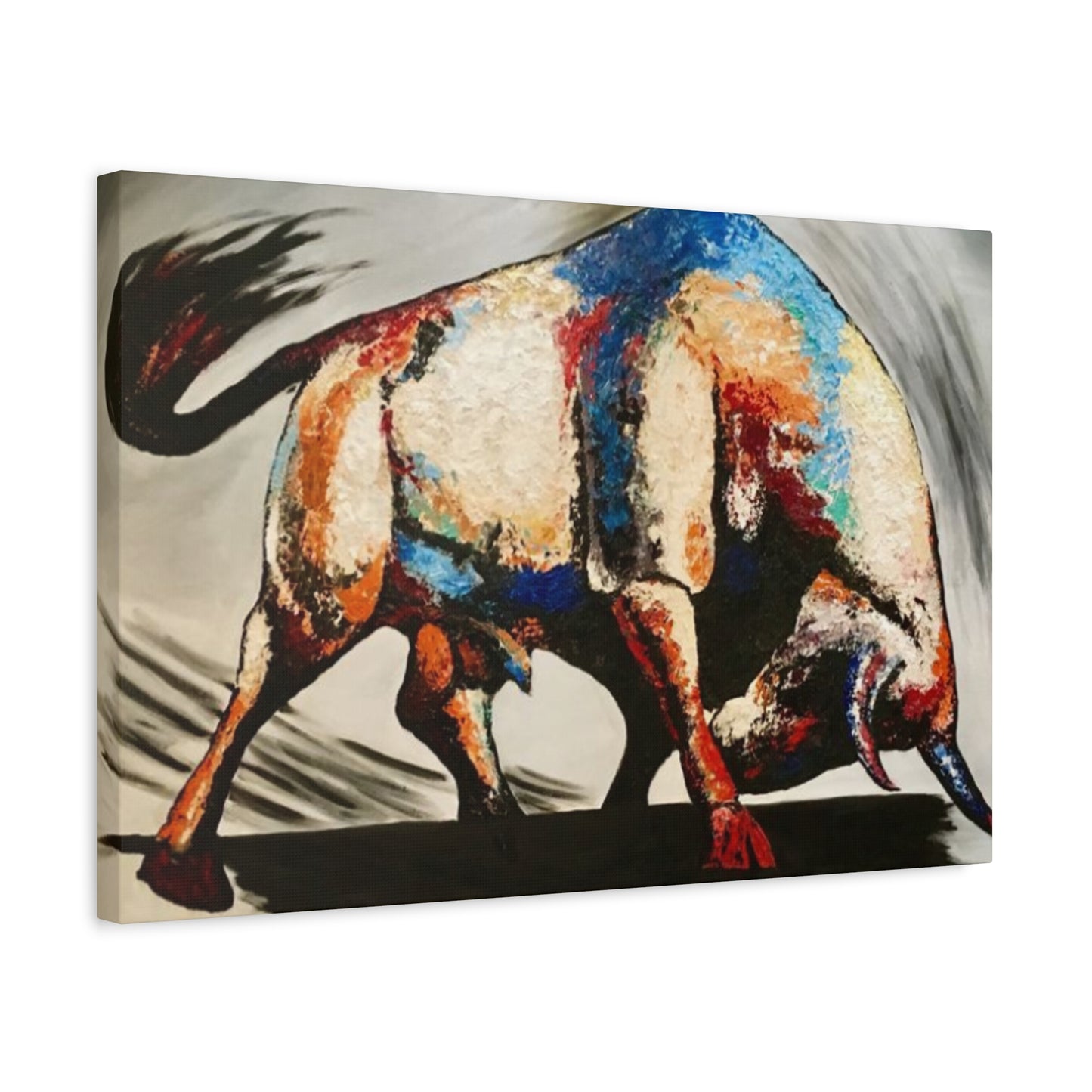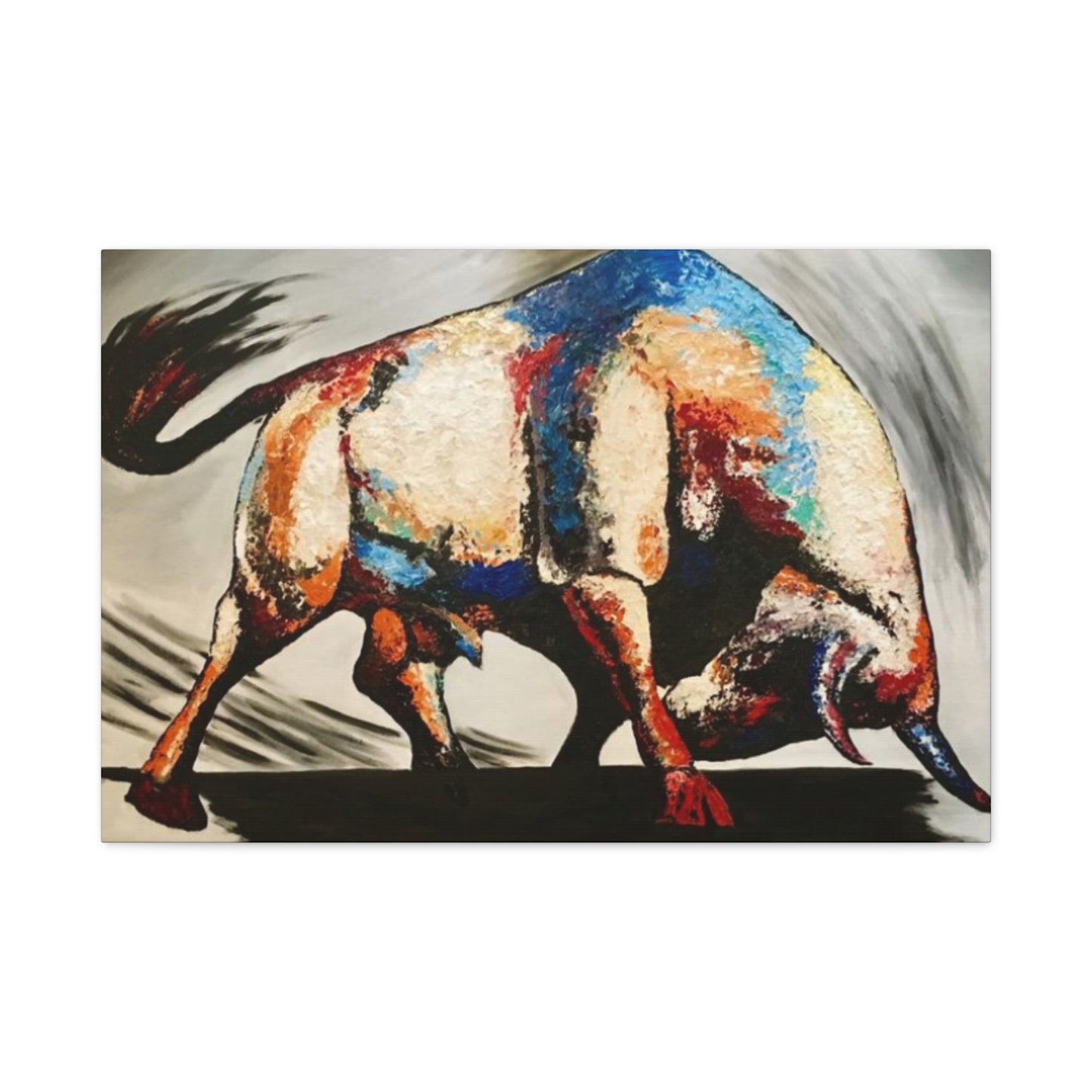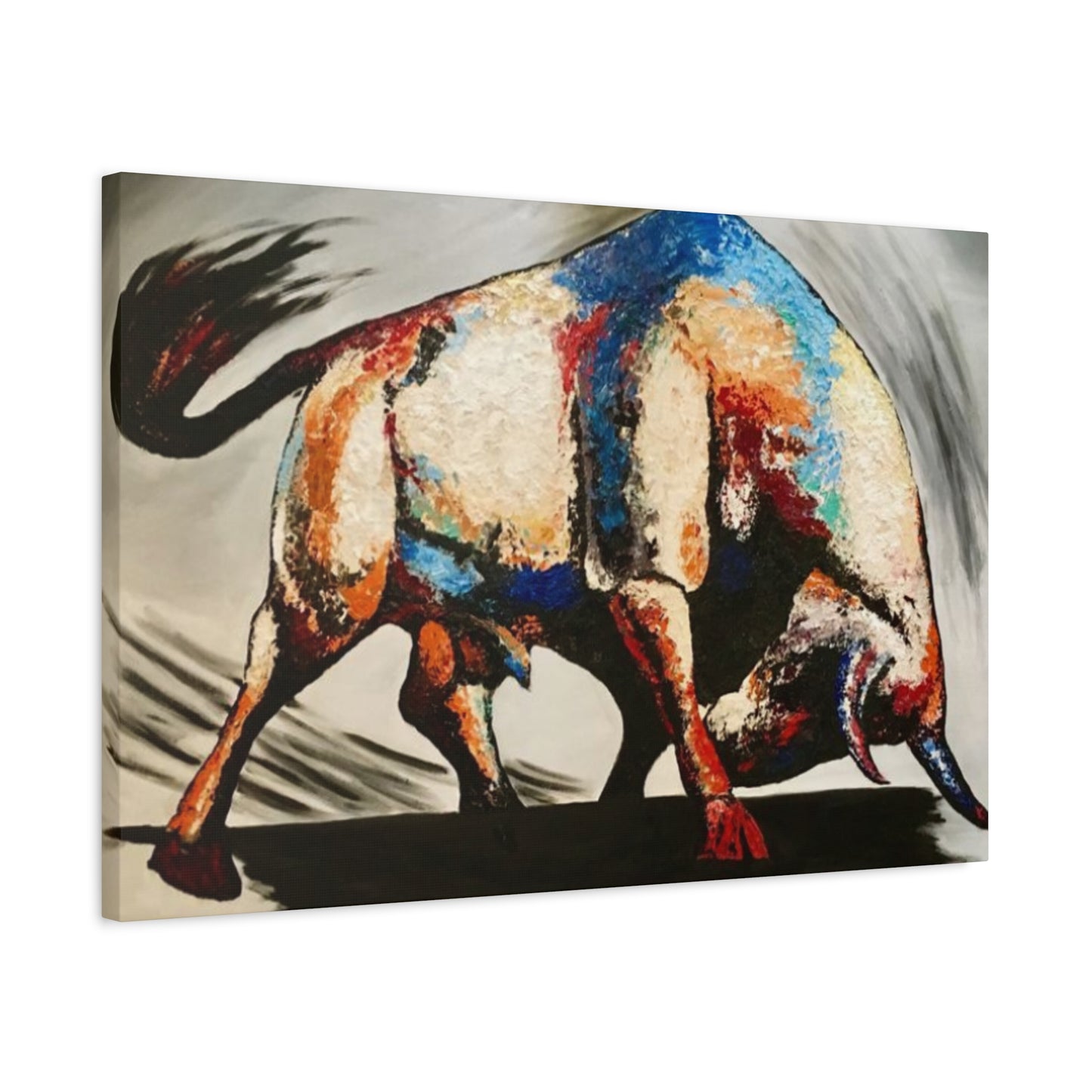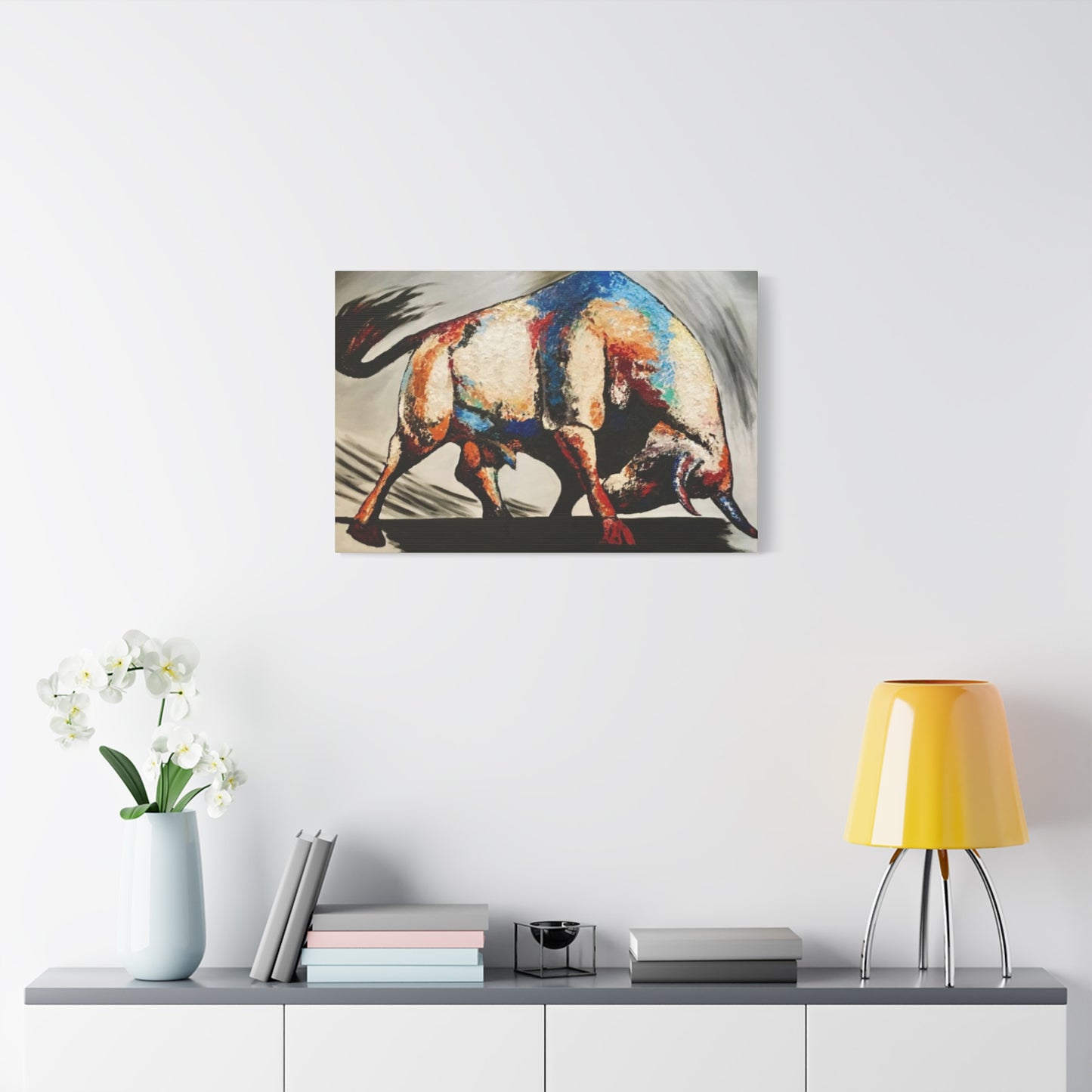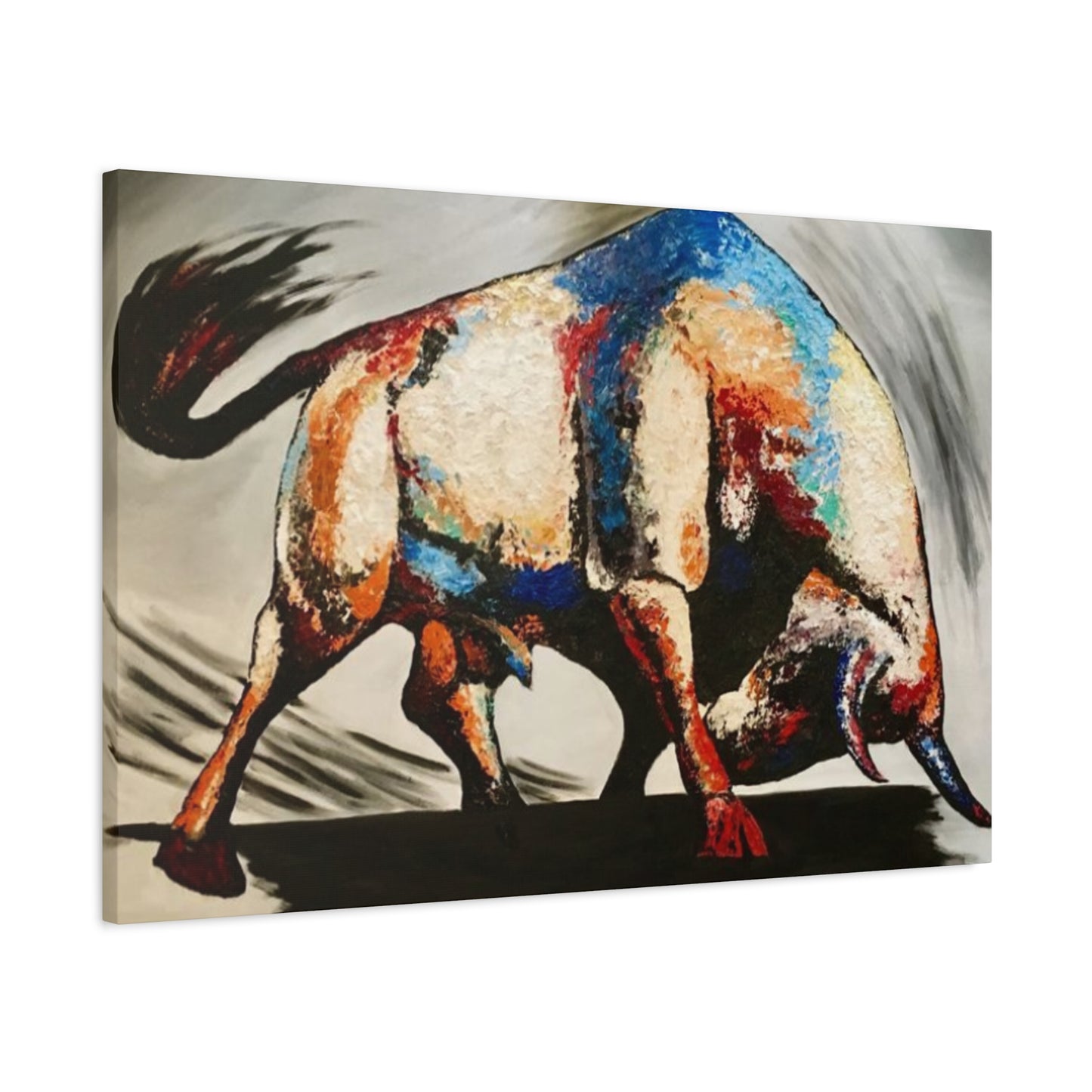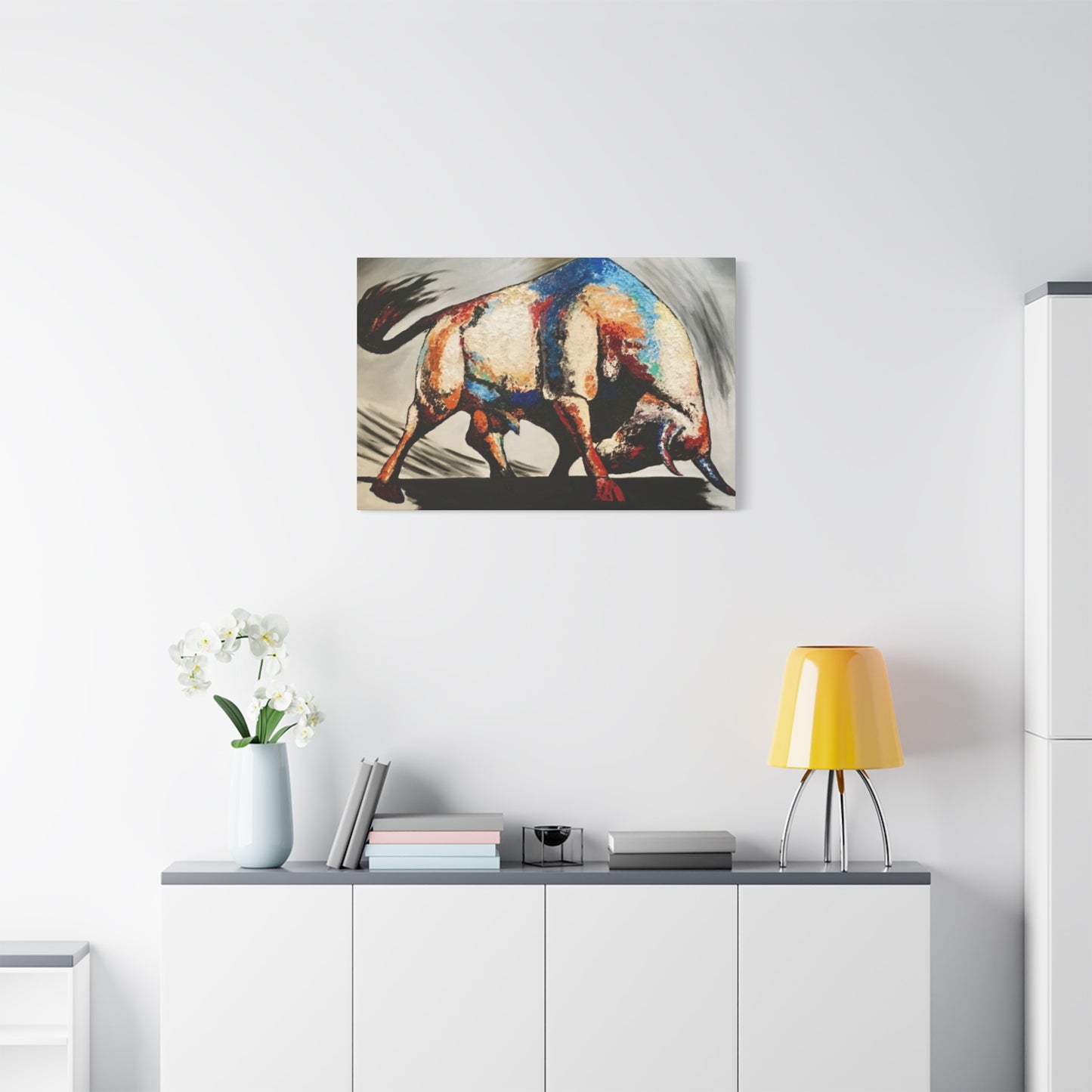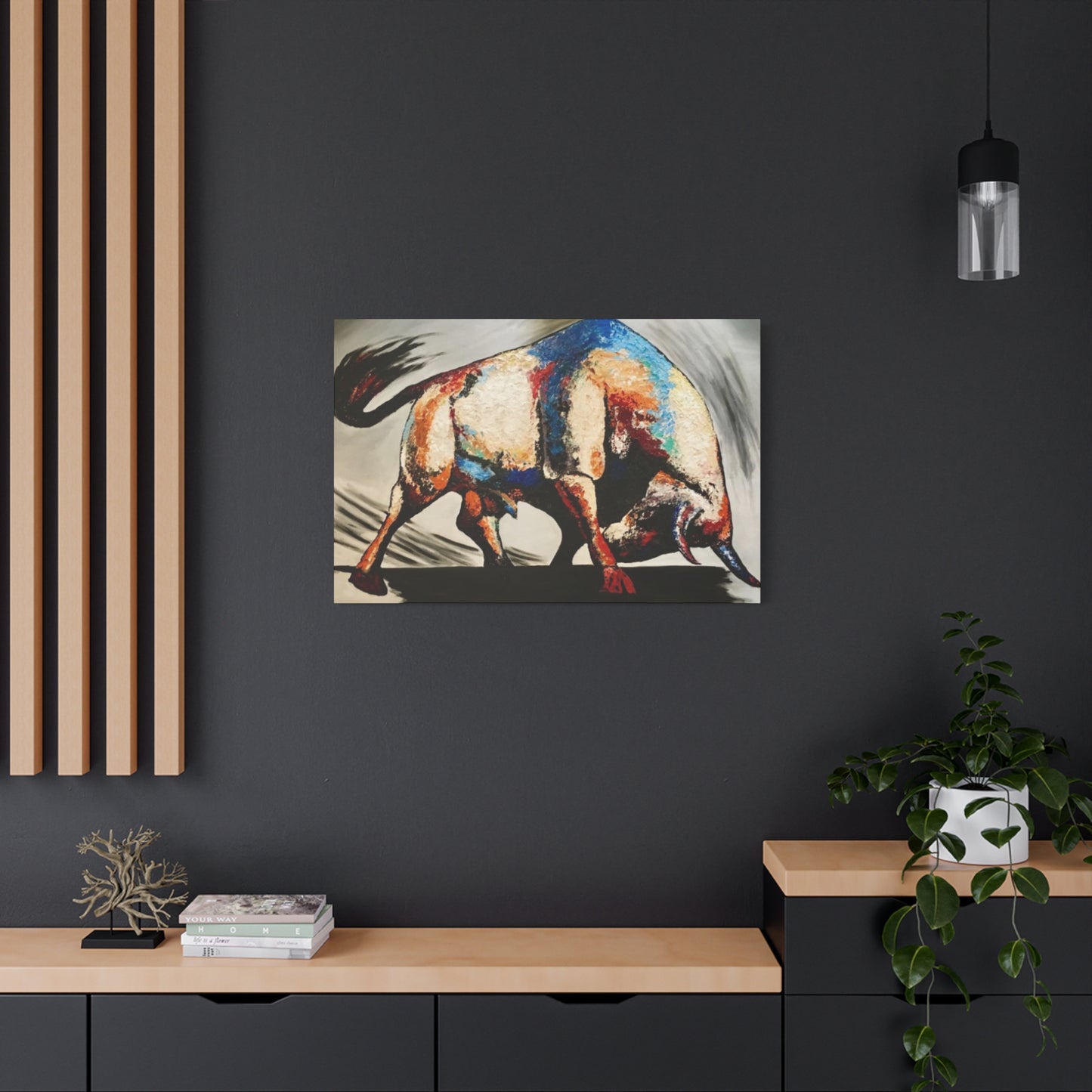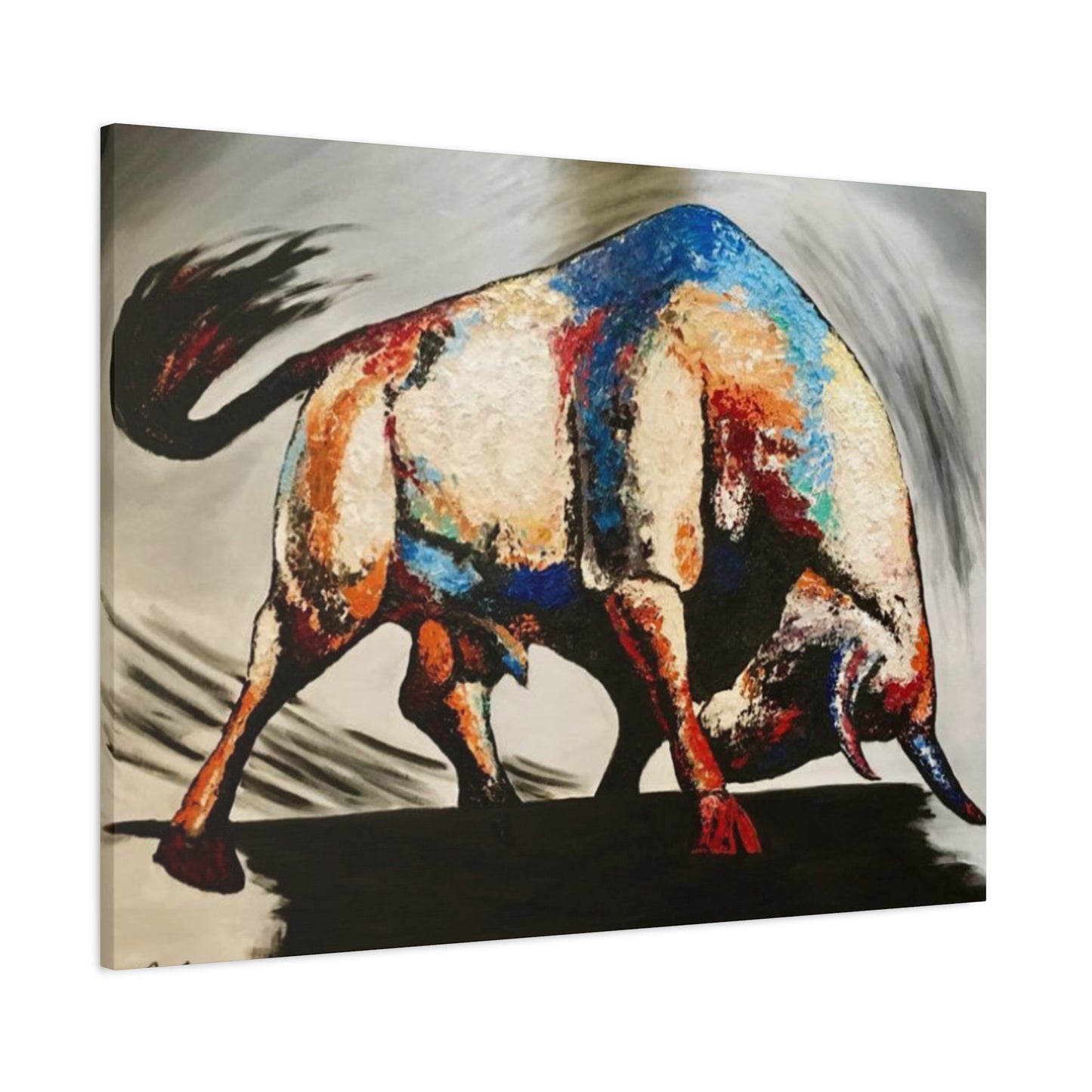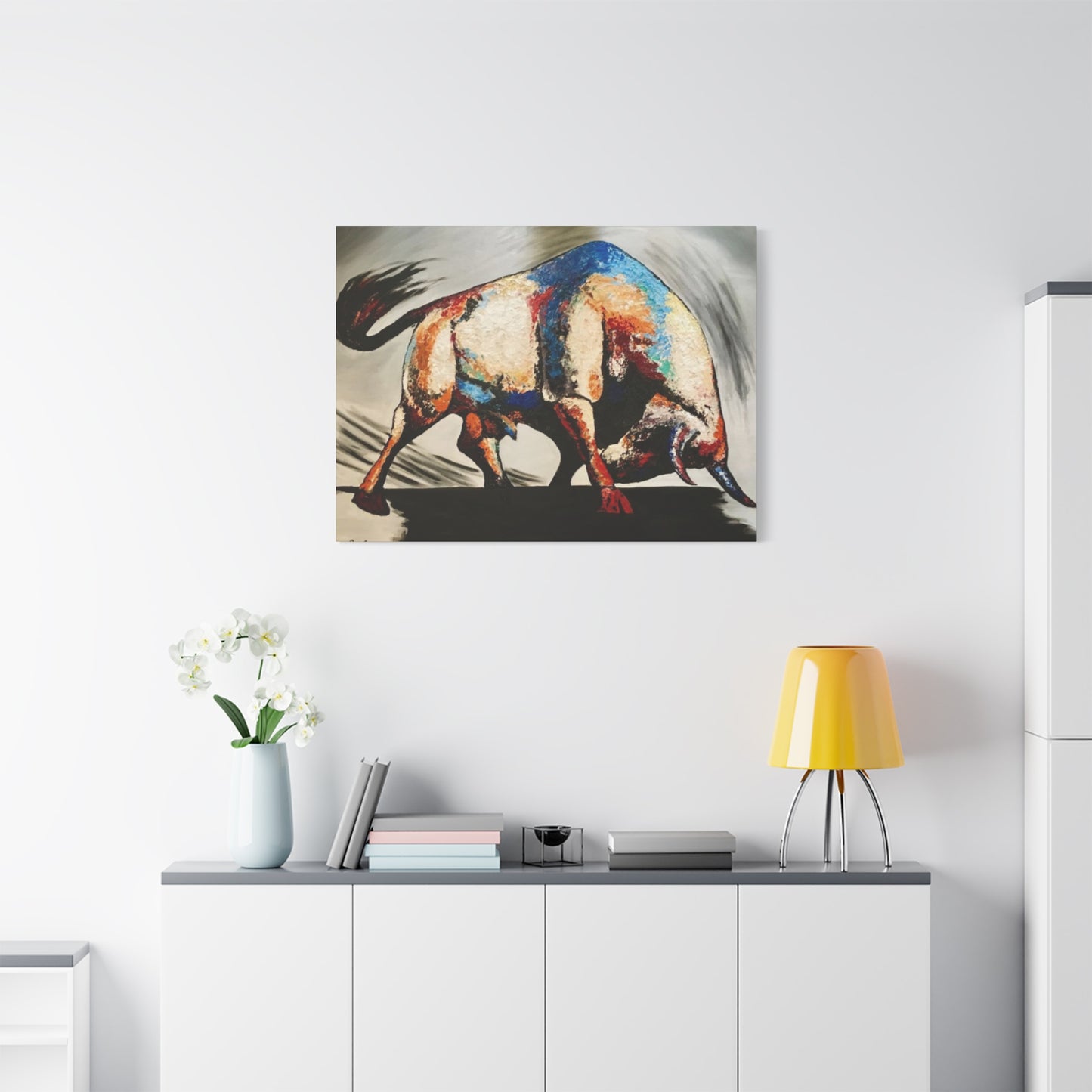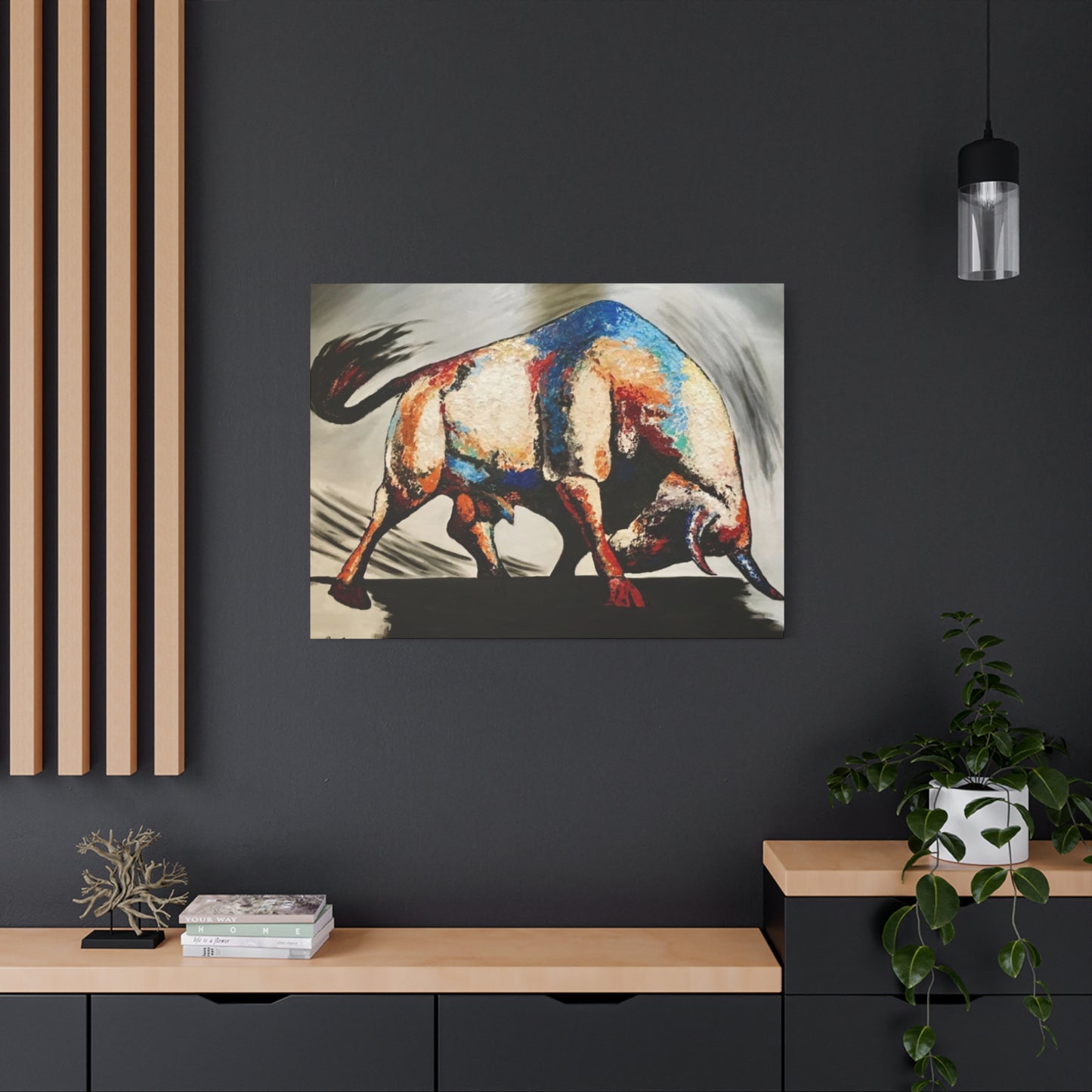Longhorns Wall Art: Your Definitive Ranch-Style Home Decorating Manual
Ranch-style aesthetics have captured the hearts of homeowners across the globe, bringing rugged charm and authentic western character into contemporary living environments. Among the most striking elements that define this distinctive decorating approach, longhorn wall art stands as a powerful symbol of American heritage and frontier spirit. These magnificent creatures, with their impressive horns and stoic presence, translate beautifully into artistic representations that can transform any room from ordinary to extraordinary.
The appeal of longhorn imagery extends far beyond simple decoration. These artworks serve as conversation starters, cultural touchstones, and visual anchors that ground a room in authentic western tradition. Whether you're designing a rustic cabin retreat, updating a modern farmhouse, or simply adding character to an urban apartment, longhorn wall art offers versatility that adapts to various aesthetic preferences while maintaining its distinctive identity.
Modern homeowners increasingly seek authentic elements that reflect personal values and lifestyle choices. Longhorn art represents freedom, resilience, and connection to America's pastoral heritage. The imagery evokes wide-open prairies, weathered cowboys, and the untamed spirit of the American West, making it particularly appealing to those who value independence, natural beauty, and historical significance in their home environments.
The artistic representation of longhorns has evolved significantly over the decades. Early western art focused primarily on realistic depictions, often featuring detailed paintings of actual cattle in natural settings. Contemporary interpretations have expanded to include abstract representations, minimalist line drawings, photographic prints, and mixed-media creations that capture the essence of these majestic animals while appealing to modern sensibilities.
Color palettes associated with longhorn art typically reflect earth tones and natural hues. Rich browns, warm tans, deep oranges, muted grays, and crisp whites dominate traditional pieces, while contemporary versions might incorporate unexpected color combinations or monochromatic schemes. This flexibility allows longhorn art to complement various decorating styles, from rustic country to sophisticated contemporary approaches.
The psychological impact of western imagery in home environments cannot be understated. Longhorn art creates feelings of spaciousness, freedom, and connection to nature. These pieces often serve as visual escapes from urban stress, providing homeowners with daily reminders of simpler times and natural beauty. The commanding presence of longhorn imagery can also create focal points that anchor entire room designs, providing structure and visual weight to decorating schemes.
Canvas vs. Framed Longhorn Art
Choosing between canvas and framed options represents one of the most important decisions when selecting longhorn wall art. Each format offers distinct advantages that can significantly impact the overall aesthetic and practical considerations of your decorating project.
Canvas prints provide a contemporary, streamlined appearance that works exceptionally well in modern and transitional environments. The absence of frames creates clean lines that don't compete with other decorative elements, allowing the artwork itself to take center stage. Canvas options typically cost less than framed alternatives, making them accessible for budget-conscious decorators who refuse to compromise on visual impact. The stretched canvas format also provides a gallery-quality appearance that suggests professional curation and sophisticated taste.
The texture inherent in canvas material adds visual interest and depth to longhorn imagery. This textural quality becomes particularly important when displaying photographic prints or detailed paintings, as the canvas weave can enhance the organic nature of the subject matter. Canvas prints also offer practical advantages, including lighter weight that simplifies hanging and reduced risk of damage from broken glass during transport or cleaning.
Framed longhorn art, conversely, provides traditional elegance and formal presentation that works beautifully in classic and rustic environments. The frame itself becomes part of the artistic statement, offering opportunities to reinforce color schemes, material choices, and stylistic preferences throughout the room. Wooden frames, particularly those featuring distressed finishes or natural wood grains, complement longhorn imagery perfectly by reinforcing western and rustic themes.
Quality frames protect artwork from environmental factors including humidity, dust, and UV exposure. This protection becomes particularly important for valuable or sentimental pieces that homeowners plan to display long-term. Glass or acrylic covers also prevent direct contact with artwork surfaces, reducing wear and extending display life significantly.
Frame selection offers additional customization opportunities that can enhance the relationship between artwork and surrounding décor. Weathered barn wood frames reinforce authentic western aesthetics, while sleek metal frames can bridge traditional western imagery with contemporary decorating approaches. Ornate frames might suit formal dining rooms or traditional living areas, while simple, clean-lined frames work better in minimalist or modern environments.
Size considerations differ between canvas and framed options. Large canvas prints can dominate walls without overwhelming surrounding elements, while equivalent framed pieces might appear heavy or imposing in the same locations. This difference becomes particularly important when planning gallery walls or arranging multiple pieces together.
Maintenance requirements also vary between formats. Canvas prints require gentle dusting and occasional professional cleaning, while framed pieces need additional attention to glass surfaces and frame materials. However, framed pieces generally show less wear over time, particularly in high-traffic areas where canvas might accumulate dust or suffer minor damage.
The decision between canvas and framed longhorn art ultimately depends on personal preferences, budget considerations, and the specific requirements of your decorating project. Canvas works well for casual, contemporary, or budget-conscious approaches, while frames suit formal, traditional, or high-value installations. Many successful decorating schemes incorporate both formats strategically throughout the home, using canvas in bedrooms and casual areas while reserving framed pieces for formal entertaining areas.
Rustic Walls Need Longhorns
Rustic wall treatments create the perfect backdrop for longhorn artwork, establishing authentic western atmospheres that celebrate America's frontier heritage. The natural textures, warm colors, and organic materials characteristic of rustic walls provide ideal complements to longhorn imagery, creating cohesive environments that feel both historically grounded and personally meaningful.
Reclaimed wood walls represent the gold standard for rustic applications, offering authentic character that commercial materials cannot replicate. The weathered surfaces, varied grain patterns, and natural color variations inherent in reclaimed lumber create visual depth that enhances longhorn artwork by providing textural contrast without competing for attention. The horizontal lines created by shiplap or board-and-batten installations also provide subtle repetition that echoes the linear elements often found in longhorn horn configurations.
Stone walls offer another excellent foundation for longhorn displays, particularly when featuring natural materials like fieldstone, limestone, or river rock. The irregular surfaces and varied colors typical of natural stone installations create organic backdrops that reinforce connections to outdoor environments and natural settings. Stone walls also provide excellent durability and low maintenance requirements, making them practical choices for high-traffic areas or homes with active families.
Exposed brick walls bring industrial warmth that complements longhorn imagery beautifully, particularly in urban loft environments or converted agricultural buildings. The regular pattern of brick courses provides structure without rigidity, while the warm red and brown tones typically found in brick harmonize perfectly with traditional longhorn art color palettes. Painted brick offers additional versatility, with white or cream finishes creating neutral backdrops that allow artwork to dominate, while darker colors provide dramatic contrast that makes lighter artwork elements pop.
Plaster walls treated with texture techniques can simulate adobe construction traditional to southwestern regions, creating authentic contexts for longhorn displays. These treatments often incorporate earth tones and organic shapes that reflect natural building methods, reinforcing the connection between artwork and regional architectural traditions. Textured plaster also provides subtle visual interest that prevents walls from appearing flat or monotonous while maintaining neutral character that supports rather than competes with displayed artwork.
Log walls represent perhaps the most authentic rustic treatment for longhorn displays, directly connecting artwork to frontier building traditions. The substantial visual weight of log construction requires careful consideration when selecting and sizing longhorn pieces, as artwork must be substantial enough to hold its own against the dominant wall treatment. However, successful combinations create powerful western atmospheres that feel genuinely authentic rather than decoratively contrived.
Barnwood installations offer affordable alternatives to full reclaimed wood treatments while maintaining authentic character. Applied as accent walls or wainscoting, barnwood provides rustic texture and color variation that complements longhorn artwork perfectly. The varied widths, weathered surfaces, and nail holes typical of authentic barnwood tell stories of agricultural use that reinforce the historical connections inherent in longhorn imagery.
Color considerations become crucial when combining rustic walls with longhorn art. Natural wood tones provide warm, neutral backgrounds that support virtually any longhorn color palette, while painted surfaces offer opportunities to reinforce specific color schemes throughout the room. Gray-washed woods create sophisticated backdrops that work particularly well with black and white longhorn photography, while natural finishes complement full-color artwork beautifully.
Lighting plays a critical role in rustic longhorn displays. Natural wood and stone surfaces absorb light differently than smooth walls, often requiring additional illumination to properly showcase artwork details. Track lighting, picture lights, or strategically placed accent lamps can highlight longhorn pieces while creating dramatic shadows that enhance wall texture and visual depth.
Scale relationships between rustic walls and longhorn art require careful consideration. Large-scale wall treatments like full log construction or massive stone installations need substantial artwork to maintain proper proportions, while more subtle rustic treatments can accommodate smaller pieces effectively. The goal is creating harmony between wall treatment and artwork that feels intentional rather than coincidental.
Modern Homes, Western Vibes
Contemporary architecture and western aesthetics might seem contradictory, but skillful integration of longhorn wall art can create sophisticated environments that celebrate both modern living and western heritage. This design approach requires careful balance, selecting artwork that honors western traditions while complementing clean lines, open floor plans, and contemporary materials typical of modern construction.
Minimalist longhorn representations work exceptionally well in modern contexts, offering western character without overwhelming contemporary design elements. Simple line drawings, abstract interpretations, or highly stylized representations can provide western references while maintaining the visual restraint valued in modern decorating approaches. These pieces often feature monochromatic color schemes, geometric compositions, or simplified forms that align with contemporary aesthetic preferences.
Scale considerations become particularly important when introducing western elements into modern environments. Large-scale longhorn pieces can serve as dramatic focal points in open-concept living areas, while smaller works might get lost against expansive walls and minimal furniture arrangements. The key is selecting pieces substantial enough to maintain presence within spacious modern environments while avoiding overwhelming the clean, uncluttered aesthetics these homes typically feature.
Material choices offer opportunities to bridge western imagery with contemporary sensibilities. Metal longhorn sculptures or prints can echo the steel, aluminum, and glass materials commonly used in modern construction, while canvas prints provide softer alternatives that warm sterile environments without introducing excessive visual complexity. Mixed-media pieces combining traditional western imagery with contemporary materials and techniques can create unique hybrid aesthetics that satisfy both design approaches.
Color coordination requires careful attention when combining western art with modern decorating schemes. Contemporary homes often feature neutral color palettes with strategic accent colors, providing frameworks that can accommodate western artwork when color relationships are carefully managed. Black and white longhorn photography works particularly well in modern contexts, providing western character while maintaining the sophisticated restraint valued in contemporary design.
Placement strategies differ significantly between traditional western environments and modern homes. While rustic settings might accommodate casual, asymmetrical arrangements, modern environments typically require more structured approaches to artwork placement. Grid arrangements, centered compositions, and carefully measured spacing create the precision modern aesthetics demand while allowing western artwork to contribute meaningfully to overall design schemes.
Lighting techniques can enhance the integration of western art into modern environments. Contemporary track lighting, recessed fixtures, or architectural lighting elements can highlight longhorn pieces while maintaining the clean, unobtrusive character preferred in modern design. Dramatic lighting can also create interesting shadow patterns that add visual depth without requiring additional decorative elements.
Furniture coordination presents both challenges and opportunities when combining western art with modern environments. Contemporary furniture tends toward clean lines, neutral colors, and minimal ornamentation, providing neutral foundations that can accommodate western artwork without creating visual conflicts. However, the contrast between sleek modern furnishings and rugged western imagery can create tension that requires careful resolution through thoughtful color coordination and strategic placement decisions.
Architectural elements in modern homes can support or complicate western art integration. Exposed steel beams, concrete surfaces, or industrial-inspired elements might complement metal longhorn sculptures or contemporary western interpretations. Conversely, highly refined finishes and precision details typical of modern construction might clash with rustic western aesthetics unless artwork selection and presentation are carefully considered.
The goal of combining modern homes with western vibes is creating environments that feel intentionally curated rather than accidentally assembled. This requires selecting longhorn artwork that respects both design traditions while serving the practical and aesthetic needs of contemporary living. Success comes from recognizing that modern and western aesthetics share common values including authenticity, quality materials, and connection to place, even though their expressions differ significantly.
Longhorn Art for Farmhouse Decor
Farmhouse decorating has experienced tremendous popularity in recent years, offering relaxed elegance that combines rustic charm with comfortable sophistication. Longhorn wall art fits naturally into farmhouse aesthetics, providing authentic western character that complements the agricultural heritage and pastoral sensibilities central to this decorating approach.
The farmhouse aesthetic emphasizes natural materials, vintage elements, and comfortable functionality over formal presentation. These priorities align perfectly with longhorn imagery, which represents agricultural traditions, rural life, and connection to the land. Incorporating longhorn art into farmhouse environments feels organic and appropriate rather than forced or decoratively contrived.
Color palettes typical of farmhouse decorating provide ideal backdrops for longhorn artwork. The neutral foundations, warm accent colors, and emphasis on natural tones characteristic of farmhouse schemes complement traditional longhorn art beautifully. Cream walls, weathered wood finishes, and vintage textile patterns create harmonious environments where longhorn pieces contribute to cohesive design stories rather than standing out as isolated decorative elements.
Vintage and antique longhorn pieces work particularly well in farmhouse settings, reinforcing the historical connections and authentic character valued in this decorating approach. Original oil paintings, vintage photographs, or antique advertising materials featuring longhorns can serve as focal points while contributing to the collected-over-time aesthetic that makes farmhouse decorating feel genuine rather than commercially staged.
Mixed-media displays combining longhorn art with complementary elements create rich visual narratives that celebrate agricultural heritage. Combining longhorn prints with vintage farming tools, antique livestock photographs, or period agricultural documents creates gallery walls that tell comprehensive stories about rural American life. These arrangements feel educational and personally meaningful while providing substantial visual impact.
Seasonal rotation opportunities make longhorn art particularly valuable in farmhouse contexts. Different pieces can be featured throughout the year, perhaps emphasizing cattle drives during summer months or highlighting winter feeding scenes during colder seasons. This rotation keeps displays fresh and interesting while allowing homeowners to showcase larger collections than wall real estate might normally accommodate.
Size variety works well in farmhouse applications, where eclectic arrangements often feel more appropriate than formal, matching sets. Combining large statement pieces with smaller supporting elements creates layered displays that reflect the accumulated character valued in authentic farmhouse decorating. This approach also accommodates budget constraints by allowing homeowners to build collections gradually over time.
Texture considerations become important when selecting longhorn art for farmhouse environments. Canvas prints, wooden signs, metal sculptures, and vintage prints each contribute different textural qualities that can enhance the varied surface treatments typical of farmhouse decorating. The goal is creating rich, tactile environments that invite interaction and exploration rather than formal admiration from a distance.
Furniture coordination in farmhouse settings typically emphasizes comfort and functionality over formal presentation, providing relaxed contexts that accommodate western artwork naturally. Distressed wood furniture, vintage textiles, and comfortable seating arrangements create informal environments where longhorn art contributes to overall comfort rather than demanding formal attention.
Lighting in farmhouse settings tends toward warm, ambient sources that create cozy atmospheres. Vintage-inspired fixtures, natural light from large windows, and layered lighting schemes provide gentle illumination that showcases longhorn artwork while maintaining the relaxed character central to successful farmhouse decorating.
The authenticity valued in farmhouse decorating makes longhorn art selection particularly important. Pieces should feel genuinely connected to western or agricultural heritage rather than commercially manufactured for decorative purposes only. This emphasis on authenticity often leads homeowners toward vintage finds, local artist works, or family heirloom pieces that carry personal or historical significance beyond their decorative value.
Large Canvas, Big Impact
Oversized canvas prints have revolutionized home decorating by making gallery-quality artwork accessible to average homeowners while creating dramatic focal points that can transform entire rooms. Large longhorn canvases capitalize on this trend by providing western character with the visual weight necessary to anchor contemporary living areas and open-concept floor plans.
Scale psychology plays a crucial role in successful large canvas applications. Substantial artwork commands attention and respect in ways that smaller pieces cannot match, creating immediate visual hierarchy that organizes surrounding decorative elements. Large longhorn canvases can establish western themes that influence furniture selection, color choices, and accessory decisions throughout entire rooms, providing design direction that simplifies decorating decisions.
Placement considerations become critical when working with large canvas pieces. These substantial artworks require adequate wall area to display properly without crowding surrounding elements. The general rule suggests leaving approximately one-third of wall area around large pieces unoccupied, though this guideline must be adjusted based on specific room proportions and furniture arrangements. Ceiling height also influences placement decisions, with larger canvases requiring substantial vertical clearance to avoid appearing cramped or overwhelming.
Color relationships take on increased importance with large canvas installations. Substantial artwork influences room color schemes more dramatically than smaller pieces, making initial color coordination essential for long-term satisfaction. Large longhorn canvases featuring warm earth tones can establish color foundations that guide subsequent decorating decisions, while monochromatic pieces provide neutral anchors that accommodate changing accent colors over time.
Quality considerations become more noticeable as canvas size increases. Large prints reveal printing defects, color inconsistencies, or resolution limitations that might be acceptable in smaller formats. Professional printing services specializing in large-format output typically produce superior results compared to standard photo printing operations, making investment in quality particularly important for statement pieces.
Mounting and hanging large canvases requires special consideration for safety and visual success. Standard picture hanging hardware may prove inadequate for substantial pieces, necessitating heavy-duty mounting systems or professional installation. Wall construction must also be evaluated, with drywall anchors or direct stud mounting often necessary for secure installation.
Room proportion relationships affect the success of large canvas installations significantly. Small rooms can feel overwhelmed by oversized artwork, while expansive areas might diminish the impact of pieces that would seem substantial in smaller contexts. The goal is achieving harmony between artwork scale and room dimensions that feels intentional rather than accidental or inappropriate.
Lighting large canvases effectively often requires specialized solutions beyond standard room lighting. Track lighting systems, picture lights, or architectural lighting elements can highlight large pieces while avoiding glare or uneven illumination common with standard fixtures. Natural light sources should also be considered, as large canvases can both benefit from and be damaged by direct sunlight exposure.
Budget considerations for large canvas pieces extend beyond initial purchase prices. Shipping costs, professional installation fees, and specialized mounting hardware can add significantly to total investment. However, the visual impact achieved by single large pieces often exceeds that created by multiple smaller works, potentially offering better value for homeowners seeking dramatic decorating impact.
Flexibility limitations should be acknowledged when investing in large canvas pieces. Substantial artworks become difficult to relocate, store, or reconfigure, making initial placement decisions particularly important. Homeowners should consider long-term decorating plans and lifestyle changes that might affect large artwork suitability before making significant investments.
The trend toward large canvas prints reflects broader changes in contemporary living, including larger homes, open floor plans, and reduced formal decorating constraints. Large longhorn canvases capitalize on these trends by providing bold, personal statements that reflect individual taste while creating environments that feel curated and intentional rather than accidentally assembled.
Minimalist Longhorn Prints
Minimalist design principles emphasize simplicity, functionality, and visual restraint, creating environments that feel calm, organized, and intentionally curated. Longhorn prints designed for minimalist applications must honor these principles while providing western character that enriches rather than overwhelms carefully balanced decorating schemes.
Line quality becomes paramount in minimalist longhorn representations. Clean, confident strokes create powerful imagery without unnecessary detail that might complicate visual messages. Single-line drawings, geometric abstractions, or highly simplified silhouettes can capture longhorn essence while maintaining the visual restraint essential to successful minimalist decorating.
Color limitation represents another crucial element in minimalist longhorn applications. Monochromatic schemes, neutral palettes, or carefully selected accent colors prevent visual complexity that conflicts with minimalist principles. Black and white longhorn prints work particularly well in minimalist contexts, providing maximum visual impact while maintaining color discipline essential to this decorating approach.
Negative area utilization distinguishes successful minimalist artwork from busy or complicated designs. Longhorn prints featuring substantial white or neutral backgrounds allow breathing room that prevents visual crowding while emphasizing the essential elements of the design. This approach aligns with minimalist values of intentional editing and thoughtful composition.
Scale relationships require careful consideration in minimalist applications. While large pieces can serve as dramatic focal points, they must be balanced against minimalist principles of restraint and proportion. Medium-scale longhorn prints often work better in minimalist contexts than oversized statement pieces that might dominate carefully balanced environments.
Material considerations support minimalist aesthetics when they emphasize quality and authenticity over ornamentation. High-quality papers, professional printing techniques, and careful attention to detail reflect minimalist values of craftsmanship and intentional selection. Simple mounting techniques that avoid elaborate framing also support minimalist principles.
Placement strategies in minimalist environments typically emphasize isolation and breathing room around individual pieces. Crowded gallery walls or busy arrangements conflict with minimalist principles, making careful spacing and strategic placement essential for success. Single longhorn prints given adequate surrounding area often create more impact than multiple pieces competing for attention.
Typography integration can enhance minimalist longhorn prints when executed thoughtfully. Simple, clean fonts presenting relevant quotes, single words, or brief phrases can add meaning without complicating visual messages. However, text elements must be carefully balanced against imagery to maintain minimalist restraint.
Geometric elements can bridge minimalist aesthetics with longhorn imagery effectively. Angular horn representations, geometric body shapes, or abstract interpretations can provide western references while aligning with minimalist preferences for clean lines and structured compositions.
Contemporary interpretations of longhorn imagery often work better in minimalist contexts than traditional representational approaches. Stylized versions that capture essential characteristics while eliminating unnecessary detail can provide western character without conflicting with minimalist principles of visual editing and intentional simplicity.
Quality over quantity principles central to minimalist philosophy make individual longhorn print selection particularly important. Single, carefully chosen pieces that resonate personally and aesthetically often provide more satisfaction than multiple works that might create visual clutter or decision fatigue typical of more elaborate decorating approaches.
The goal of minimalist longhorn prints is creating meaningful western references that enrich environments without compromising the calm, organized character valued in minimalist decorating. Success requires rigorous editing, quality materials, and thoughtful placement that respects both western artistic traditions and minimalist design principles.
Best Longhorn Art for Living Rooms
Living rooms serve as primary entertaining areas where families gather and guests form first impressions, making artwork selection particularly important for establishing desired atmospheres and reflecting personal taste. Longhorn art can transform living rooms by providing western character, conversation starters, and visual anchors that organize surrounding decorative elements.
Scale considerations dominate living room artwork selection, as these rooms typically feature substantial wall areas that require appropriately sized pieces to maintain proper proportions. Large longhorn canvases or substantial framed prints work well above sofas, mantels, or other primary seating areas where they can serve as focal points without overwhelming furniture arrangements. Multiple medium-sized pieces can also work effectively when arranged as gallery walls or coordinated groupings.
Color coordination becomes crucial in living room applications where artwork must complement existing furniture, window treatments, and decorative accessories. Neutral longhorn pieces provide flexibility for changing decorating schemes over time, while color artwork can establish palette foundations that guide subsequent decorating decisions. The key is selecting pieces that enhance rather than conflict with overall room color strategies.
Conversation value makes longhorn art particularly suitable for living room applications. These distinctive pieces naturally prompt discussions about western heritage, American history, travel experiences, or personal connections to rural life. This social aspect can enhance entertaining experiences while reflecting host personality and interests in meaningful ways.
Viewing distance affects artwork selection in living rooms where people observe pieces from various positions and distances throughout the room. Detailed works that reward close examination work well in intimate seating areas, while bold, simple compositions maintain impact when viewed from across large rooms. The goal is selecting pieces that remain engaging from multiple viewing positions.
Lighting considerations become complex in living rooms that must accommodate various activities and times of day. Artwork should look appealing under both natural daylight and artificial evening illumination, requiring careful attention to color selection and placement relative to light sources. Dedicated picture lighting can enhance longhorn displays while adding ambient lighting for evening activities.
Durability requirements in high-traffic living areas favor certain types of longhorn art over others. Canvas prints resist damage better than framed pieces with glass that might break, while fade-resistant printing techniques ensure long-term color stability under varying lighting conditions. These practical considerations become particularly important in active family environments.
Style coordination with existing furniture and architectural elements influences longhorn art selection significantly. Traditional living rooms might accommodate realistic paintings or vintage prints, while contemporary environments might require more stylized or abstract interpretations. The goal is creating harmony between artwork and surroundings that feels intentional rather than coincidental.
Seasonal flexibility allows living room longhorn displays to remain fresh and interesting throughout the year. Rotating pieces, changing supporting elements, or adjusting lighting can create variety without requiring major redecorating efforts. This approach also accommodates growing collections or changing personal preferences over time.
Investment considerations affect living room artwork selection, as these prominent pieces often represent significant purchases that homeowners expect to enjoy long-term. Quality materials, professional framing, and timeless designs become particularly important for pieces that will be viewed daily and shown to guests regularly.
Feng shui principles suggest that living room artwork should promote positive energy, conversation, and relaxation. Longhorn imagery can support these goals when pieces feature confident, peaceful representations rather than aggressive or chaotic compositions. The majestic, grounded presence of longhorns naturally promotes feelings of stability and strength that enhance living room environments.
Personal connection ultimately determines the most suitable longhorn art for individual living rooms. Pieces that resonate with family history, travel memories, or personal values create more meaningful environments than selections based solely on decorative considerations. The best living room longhorn art reflects authentic personal taste while contributing to welcoming, comfortable environments that support family life and social interactions.
Top Longhorn Canvas Styles
Contemporary longhorn canvas offerings span a remarkable range of artistic styles, each bringing distinct character and visual impact to home environments. Understanding available styles helps homeowners select pieces that align with personal taste, decorating objectives, and practical requirements while ensuring long-term satisfaction with their investments.
Photographic realism represents one of the most popular longhorn canvas styles, offering detailed representations that capture the majesty and character of actual cattle. These pieces often feature dramatic lighting, natural settings, and careful attention to textural details that create almost three-dimensional effects. High-resolution printing techniques allow contemporary photographic canvases to rival traditional photography in quality while offering the durability and ease of display associated with canvas formats.
Painted realism brings artistic interpretation to realistic longhorn representations, combining photographic accuracy with painterly techniques that add warmth and personality to the imagery. These pieces often feature visible brushstrokes, color variations, and artistic choices that distinguish them from purely photographic approaches while maintaining recognizable subject matter that appeals to traditional tastes.
Abstract interpretations reduce longhorn imagery to essential elements, emphasizing shape, color, and composition over realistic detail. These pieces work particularly well in contemporary environments where literal representation might conflict with modern decorating principles. Abstract longhorn canvases can provide western references while maintaining visual compatibility with minimalist or contemporary design approaches.
Watercolor styles bring softness and fluidity to longhorn imagery, creating gentle impressions that work well in bedrooms, bathrooms, or other environments where harsh contrast might feel inappropriate. The translucent quality typical of watercolor techniques creates subtle, layered effects that add visual depth without overwhelming surrounding decorative elements.
Vintage-inspired designs capture the character of historical western art while utilizing contemporary printing and canvas technologies. These pieces might feature aged color palettes, distressed textures, or typography reminiscent of historical advertising or signage. Vintage-style longhorn canvases work particularly well in farmhouse, rustic, or traditional decorating schemes.
Silhouette presentations reduce longhorn imagery to essential shapes, creating dramatic contrast that works effectively in various decorating contexts. Black silhouettes against light backgrounds provide bold graphic impact, while reversed presentations can create softer effects. Silhouette styles work particularly well when incorporated into gallery walls or grouped arrangements.
Mixed-media approaches combine longhorn imagery with text, graphic elements, or additional artistic techniques to create complex compositions that tell broader stories. These pieces might incorporate relevant quotes, historical information, or decorative borders that enhance the central longhorn imagery. Mixed-media canvases often work well as conversation pieces or educational elements in family environments.
Geometric interpretations apply mathematical principles or structured compositions to longhorn imagery, creating ordered presentations that appeal to contemporary sensibilities. These pieces might feature grid layouts, angular representations, or systematic color applications that provide western character while maintaining visual discipline appreciated in modern decorating.
Impressionistic styles emphasize color, light, and emotional impact over precise representation, creating longhorn canvases that capture the feeling of western environments rather than literal accuracy. These pieces often feature loose brushwork, vibrant colors, and spontaneous compositions that bring energy and movement to displayed environments.
Typography-focused designs combine longhorn imagery with relevant text elements, creating pieces that function as both artwork and inspirational messages. Ranch mottos, western quotes, or location names can be integrated with longhorn imagery to create personalized pieces that reflect specific interests or experiences.
Monochromatic approaches limit color palettes to single hues or neutral ranges, creating sophisticated presentations that work well in refined decorating contexts. Black and white longhorn canvases provide maximum versatility for changing decorating schemes, while sepia or single-color approaches can create specific moods or coordinate with particular color strategies.
The selection of longhorn canvas styles ultimately depends on personal preferences, decorating objectives, and practical considerations including room function, existing décor, and budget constraints. The diversity of available styles ensures that virtually any homeowner can find longhorn canvases that enhance their living environments while reflecting individual taste and western appreciation.
Western Art That Pops
Creating visual impact with western artwork requires understanding principles of contrast, composition, and placement that make pieces command attention while enhancing rather than overwhelming surrounding environments. Longhorn art offers exceptional opportunities for dramatic displays when selected and presented thoughtfully.
Color contrast provides one of the most effective methods for creating artwork that commands attention immediately. Longhorn pieces featuring bold color combinations, dramatic lighting effects, or unexpected color choices can create focal points that organize entire room compositions. However, successful contrast requires careful balance between impact and harmony with existing decorative elements.
Scale manipulation can make relatively modest longhorn pieces create dramatic impact through strategic sizing decisions. Oversized prints displayed in smaller rooms create immediate visual drama, while collections of varied sizes can create dynamic arrangements that maintain interest through variety and movement. The key is understanding how scale relationships affect visual perception and emotional response.
Placement strategies significantly influence artwork impact, with unexpected locations often creating more dramatic effects than conventional arrangements. Longhorn pieces displayed above kitchen islands, in hallway alcoves, or bathroom locations can create surprising moments that enhance daily experiences while demonstrating creative decorating approaches.
Lighting techniques can transform ordinary longhorn artwork into dramatic focal points through strategic illumination choices. Spotlights, backlighting, or colored lighting can create theatrical effects that make pieces appear to glow or float, creating memorable visual experiences that exceed expectations based on the artwork alone.
Grouping arrangements allow multiple longhorn pieces to create collective impact that exceeds individual contributions. Gallery walls, grid arrangements, or asymmetrical compositions can create substantial visual weight while telling comprehensive stories about western heritage, personal experiences, or artistic appreciation.
Material combinations can enhance visual impact by creating textural contrast that adds depth and interest to longhorn displays. Combining canvas prints with metal sculptures, wooden signs, or photographic prints creates layered presentations that reward close examination while maintaining overall coherence.
Background treatments can dramatically affect artwork impact by providing contrast, support, or enhancement for displayed pieces. Accent walls, strategic color applications, or textural treatments can create dramatic backdrops that make longhorn artwork appear more substantial and significant than the same pieces might seem against neutral backgrounds.
Contemporary interpretations of traditional longhorn imagery can create surprising impact by combining familiar subjects with unexpected artistic approaches. Modern color palettes, geometric compositions, or abstract techniques applied to longhorn subjects can create pieces that honor western traditions while challenging viewer expectations.
Interactive elements can enhance longhorn artwork impact by encouraging viewer engagement beyond passive observation. Pieces that incorporate moveable components, changing lighting effects, or seasonal modifications can create dynamic displays that remain interesting over time while reflecting evolving personal taste.
Quality materials and presentation techniques significantly influence perceived impact, with superior printing, mounting, and display methods creating more impressive presentations than equivalent imagery handled carelessly. Investment in quality presentation often yields disproportionate returns in terms of visual impact and long-term satisfaction.
The goal of creating western art that pops is developing displays that feel intentional, sophisticated, and personally meaningful while avoiding gimmicky or contrived effects that might diminish long-term appeal. Success requires balancing immediate visual impact with enduring quality that supports daily living and reflects authentic appreciation for western artistic traditions.
Longhorn Prints for Statement Walls
Statement walls have become increasingly popular in contemporary decorating as homeowners seek to create focal points that establish room character without overwhelming entire environments. Longhorn prints offer excellent opportunities for statement wall applications, providing western character that can anchor room designs while reflecting personal taste and interests.
Wall selection represents the first crucial decision in creating effective longhorn statement walls. Primary walls visible from main room entrances create maximum impact, while secondary walls might provide more subtle emphasis that supports rather than dominates room composition. The chosen wall should offer adequate area for proper display while maintaining appropriate relationships with furniture placement and traffic flow patterns.
Color coordination becomes particularly important in statement wall applications where longhorn prints must work harmoniously with both the featured wall treatment and surrounding room elements. Complementary color relationships can create dynamic tension that enhances visual interest, while analogous schemes might provide more subtle integration that feels naturally coordinated. The goal is creating intentional color relationships that feel sophisticated rather than accidental.
Scale planning requires careful consideration of both individual print dimensions and collective arrangement size to achieve proper proportion relationships. Statement walls typically require substantial visual weight to justify their prominent positioning, making large prints or substantial groupings more effective than small, isolated pieces that might appear insignificant within the designated area.
Arrangement options for longhorn statement walls range from single oversized pieces to complex gallery wall compositions featuring multiple elements. Grid arrangements provide structured organization that works well in contemporary environments, while organic compositions might suit more casual or eclectic decorating approaches. The selected arrangement should reflect overall room character while providing adequate visual weight to anchor the chosen wall effectively.
Background treatments can significantly enhance longhorn print impact on statement walls through strategic color, texture, or material applications. Accent paint colors, wallpaper applications, or architectural modifications like board-and-batten installations can create dramatic backdrops that make longhorn prints appear more substantial and significant than they might seem against standard wall treatments.
Lighting design becomes crucial for statement wall success, as featured walls typically require enhanced illumination to maintain their prominent role throughout various daily activities and lighting conditions. Track lighting systems, recessed fixtures, or architectural lighting elements can highlight longhorn prints while creating dramatic shadow patterns that add visual depth to wall treatments.
Furniture coordination must account for statement wall prominence, ensuring that seating arrangements, table placement, and traffic patterns support rather than conflict with the featured wall composition. Furniture should be positioned to take advantage of statement wall viewing opportunities while maintaining functional room layouts that support intended activities.
Seasonal flexibility allows statement walls to remain fresh and engaging throughout the year without requiring major renovations or redecorating efforts. Interchangeable longhorn prints, adjustable lighting schemes, or supplementary decorative elements can create variety while maintaining the established focal point concept.
Budget considerations for statement wall projects often exceed those for conventional artwork placement due to enhanced presentation requirements, specialized lighting needs, and potential architectural modifications. However, the concentrated impact achieved through statement wall approaches can provide better value than distributed decorating investments that might create less dramatic results.
Maintenance requirements for statement walls typically exceed those for standard artwork displays due to enhanced visibility that makes dust, fading, or damage more noticeable. Regular cleaning schedules, UV protection measures, and careful handling during any modifications become particularly important for maintaining statement wall effectiveness over time.
Conclusion
Longhorns Wall Art serves as an essential element in crafting the perfect ranch-style home, blending rugged Western heritage with timeless artistry. These iconic symbols of strength and endurance bring an authentic rustic charm that defines the spirit of ranch living. Whether you’re decorating a sprawling ranch house, a cozy cabin, or simply seeking to infuse your home with the warmth and character of the American West, Longhorns Wall Art offers an inspiring and versatile way to elevate your décor.
This art form is more than just decorative; it is a reflection of the lifestyle and values associated with ranch culture—resilience, connection to nature, and a deep respect for tradition. Featuring bold imagery of the longhorn, with its distinctive curved horns and commanding presence, these pieces evoke the untamed beauty of wide-open spaces and the enduring spirit of the frontier. The artwork captures the raw, natural textures and earthy tones that perfectly complement rustic furniture, leather accents, and natural wood elements common in ranch-style interiors.
Incorporating Longhorns Wall Art into your home creates a focal point that anchors the design while adding layers of history and meaning. It harmonizes beautifully with both traditional and modern ranch décor, bridging the gap between classic Western motifs and contemporary style. Whether displayed above a fireplace, in an entryway, or as part of a gallery wall, these artworks inspire a sense of place and identity that is both welcoming and powerful.
Ultimately, Longhorns Wall Art is more than a design choice—it is a celebration of heritage, craftsmanship, and the rugged elegance that defines ranch living. It invites homeowners and enthusiasts alike to embrace the rich cultural narrative of the West, transforming living spaces into authentic reflections of a timeless lifestyle.

















